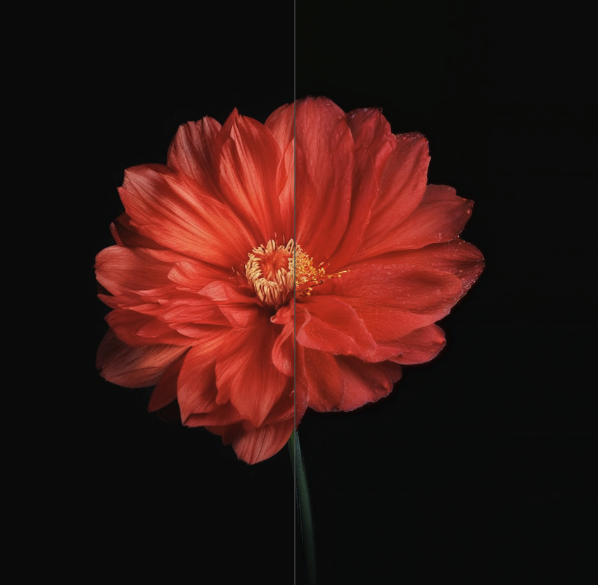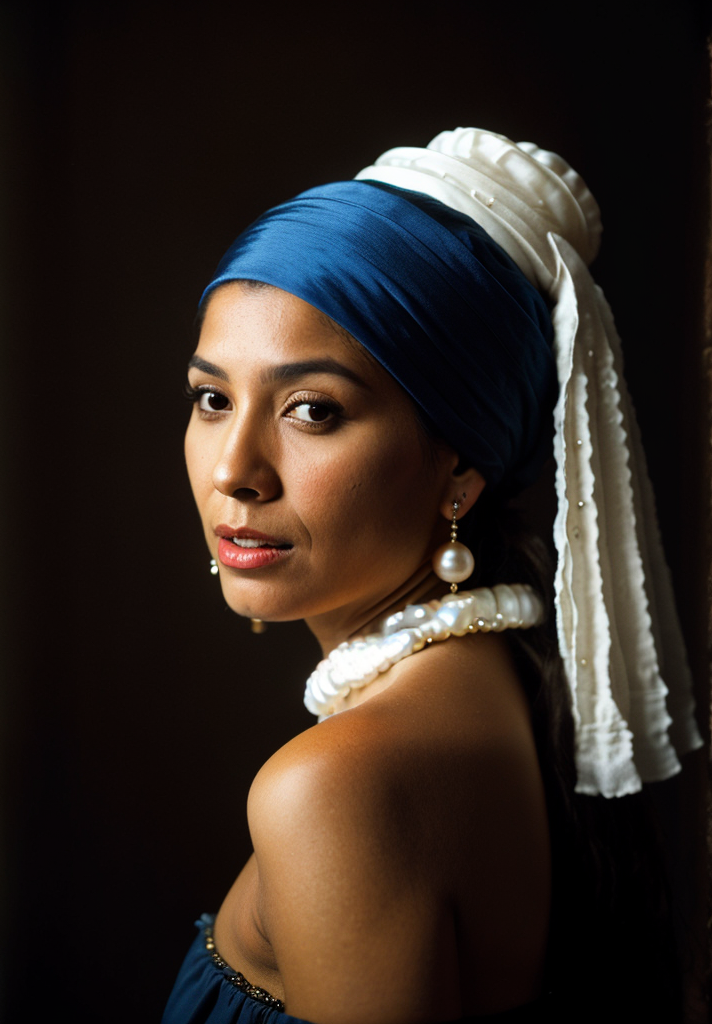demofusion-enhance
Maintainer: lucataco

9

| Property | Value |
|---|---|
| Run this model | Run on Replicate |
| API spec | View on Replicate |
| Github link | View on Github |
| Paper link | View on Arxiv |
Create account to get full access
Model overview
The demofusion-enhance model is an image-to-image enhancer that uses the DemoFusion architecture. It can be used to upscale and improve the quality of input images. The model was created by lucataco, who has also developed similar models like [object Object], [object Object], [object Object], and [object Object].
Model inputs and outputs
The demofusion-enhance model takes an input image and various parameters, and outputs an enhanced version of the image. The inputs include the input image, a prompt, a negative prompt, guidance scale, and several other hyperparameters that control the enhancement process.
Inputs
- image: The input image to be enhanced
- prompt: The text prompt to guide the enhancement process
- negative_prompt: The negative prompt to exclude certain undesirable elements
- guidance_scale: The scale for classifier-free guidance
- num_inference_steps: The number of denoising steps to perform
- stride: The stride of moving local patches
- sigma: The standard deviation of the Gaussian filter
- cosine_scale_1, cosine_scale_2, cosine_scale_3: Controls the strength of various enhancement techniques
- multi_decoder: Whether to use multiple decoders
- view_batch_size: The batch size for multiple denoising paths
- seed: The random seed to use (leave blank to randomize)
Outputs
- Output: The enhanced version of the input image
Capabilities
The demofusion-enhance model can be used to improve the quality and resolution of input images. It can remove artifacts, sharpen details, and enhance the overall aesthetic of the image. The model is capable of handling a variety of input image types and can produce high-quality output images.
What can I use it for?
The demofusion-enhance model can be useful for a variety of applications, such as:
- Enhancing low-resolution or poor-quality images for use in design, photography, or other creative projects
- Improving the visual quality of images for use in web or mobile applications
- Upscaling and enhancing images for use in marketing or advertising materials
- Preparing images for printing or other high-quality output
Things to try
With the demofusion-enhance model, you can experiment with different input parameters to see how they affect the output. Try adjusting the guidance scale, the number of inference steps, or the various cosine scale parameters to see how they impact the level of enhancement. You can also try using different input images and prompts to see how the model handles different types of content.
This summary was produced with help from an AI and may contain inaccuracies - check out the links to read the original source documents!
Related Models

demofusion

29
DemoFusion is a high-resolution image generation model developed by the team at PRIS-CV, led by creator lucataco. It is designed to democratize access to powerful image generation capabilities without the need for significant financial resources. DemoFusion builds upon the strengths of models like open-dalle-v1.1, pasd-magnify, playground-v2, pixart-lcm-xl-2, and pixart-xl-2, showcasing exceptional prompt adherence and semantic understanding. Model inputs and outputs DemoFusion is a text-to-image generation model that takes in a text prompt and various parameters to control the output image. The model can generate high-resolution images of up to 3072x3072 pixels, making it suitable for a wide range of applications. Inputs Prompt**: The text prompt that describes the desired image. Negative Prompt**: A text prompt that specifies elements to be avoided in the generated image. Width**: The width of the output image in pixels. Height**: The height of the output image in pixels. Num Inference Steps**: The number of denoising steps to perform during the image generation process. Guidance Scale**: The scale for classifier-free guidance, which controls the balance between the text prompt and the model's own generation. View Batch Size**: The batch size for multiple denoising paths. Stride**: The stride of moving local patches. Multi Decoder**: A boolean flag to use multiple decoders. Cosine Scale 1**: A parameter that controls the strength of skip-residual. Cosine Scale 2**: A parameter that controls the strength of dilated sampling. Cosine Scale 3**: A parameter that controls the strength of the Gaussian filter. Seed**: A random seed to control the output image. Outputs Output Images**: The generated high-resolution images based on the input prompt and parameters. Capabilities DemoFusion showcases exceptional prompt adherence and semantic understanding, allowing it to generate high-quality images that closely match the input text. The model is capable of producing a wide variety of images, from realistic portraits to imaginative scenes, with a high level of detail and cohesion. What can I use it for? DemoFusion can be used for a variety of creative and practical applications, such as generating concept art, product visualizations, or even personalized content for marketing and advertising. Its ability to produce high-resolution images makes it suitable for use in professional and commercial settings, where image quality is of utmost importance. Things to try Experiment with different prompts and parameter settings to explore the full capabilities of DemoFusion. Try combining it with other image manipulation tools or integrating it into your own creative workflows to unlock new possibilities. The model's strong prompt adherence and semantic understanding make it a powerful tool for generating unique and compelling visual content.
Updated Invalid Date

modelscope-facefusion

7
modelscope-facefusion is a Cog model that allows you to automatically fuse a user's face onto a template image, resulting in an image with the user's face and the template body. This model is developed by lucataco, who has created other interesting AI models like demofusion-enhance, ip_adapter-face-inpaint, and codeformer. Model inputs and outputs This model takes two inputs: a template image and a user image. The template image is the body image that the user's face will be fused onto. The user image is the face image that will be used for the fusion. Inputs user_image**: The input face image template_image**: The input body image Outputs Output**: The resulting image with the user's face fused onto the template body Capabilities modelscope-facefusion can automatically blend a user's face onto a template image, creating a seamless fusion that looks natural and realistic. This can be useful for a variety of applications, such as creating personalized avatars, generating product images with human models, or even for fun, creative projects. What can I use it for? This model could be used for a range of applications, such as creating personalized product images, generating virtual avatars, or even for fun, creative projects. For example, a e-commerce company could use modelscope-facefusion to generate product images with the customer's face, allowing them to visualize how a product would look on them. Or a social media platform could offer a feature that allows users to fuse their face onto various templates, creating unique and engaging content. Things to try One interesting thing to try with modelscope-facefusion would be to experiment with different template images and see how the fusion results vary. You could try using a variety of body types, poses, and backgrounds to see how the model handles different scenarios. Additionally, you could try combining modelscope-facefusion with other models, like stable-diffusion, to create even more unique and creative content.
Updated Invalid Date

realistic-vision-v5-img2img

169
The realistic-vision-v5-img2img model is an implementation of an image-to-image (img2img) AI model using the Realistic Vision V5.0 noVAE model as a Cog container. Cog is a framework that packages machine learning models as standard containers, making them easier to deploy and use. This model is created and maintained by lucataco. The realistic-vision-v5-img2img model is part of a family of related models created by lucataco, including Realistic Vision v5.0, Realistic Vision v5.0 Inpainting, RealVisXL V2.0 img2img, RealVisXL V1.0 img2img, and RealVisXL V2.0. Model inputs and outputs The realistic-vision-v5-img2img model takes several inputs to generate an image: Inputs Image**: The input image to be modified Prompt**: The text description of the desired output image Negative Prompt**: Text describing what should not be included in the output image Strength**: The strength of the image transformation, between 0 and 1 Steps**: The number of inference steps to take, between 0 and 50 Seed**: A seed value to randomize the output (leave blank to randomize) Outputs Output**: The generated image based on the input parameters Capabilities The realistic-vision-v5-img2img model can take an input image and modify it based on a text description (the prompt). This allows for a wide range of creative and practical applications, from generating fictional scenes to enhancing or editing existing images. What can I use it for? The realistic-vision-v5-img2img model can be used for a variety of creative and practical applications. For example, you could use it to: Generate custom artwork or illustrations based on textual descriptions Enhance or edit existing images by modifying them based on a prompt Create visualizations or concept art for stories, games, or other media Experiment with different artistic styles and techniques With the ability to control the strength and number of inference steps, you can fine-tune the output to achieve the desired results. Things to try One interesting aspect of the realistic-vision-v5-img2img model is the use of the negative prompt. By specifying elements you don't want in the output image, you can steer the model away from generating certain undesirable features or artifacts. This can be useful for creating more realistic or coherent images. Another interesting area to explore is the interplay between the input image, prompt, and model parameters. By making small adjustments to these inputs, you can often achieve very different and unexpected results, allowing for a high degree of creative exploration and experimentation.
Updated Invalid Date

sdxl-img-blend

42
The sdxl-img-blend model is an implementation of an SDXL Image Blending model using Compel as a Cog model. Developed by lucataco, this model is part of the SDXL family of models, which also includes SDXL Inpainting, SDXL Panoramic, SDXL, SDXL_Niji_Special Edition, and SDXL CLIP Interrogator. Model inputs and outputs The sdxl-img-blend model takes two input images and blends them together using various parameters such as strength, guidance scale, and number of inference steps. The output is a single image that combines the features of the two input images. Inputs image1: The first input image image2: The second input image strength1: The strength of the first input image strength2: The strength of the second input image guidance_scale: The scale for classifier-free guidance num_inference_steps: The number of denoising steps scheduler: The scheduler to use for the diffusion process seed: The seed for the random number generator Outputs output: The blended image Capabilities The sdxl-img-blend model can be used to create unique and visually interesting images by blending two input images. The model allows for fine-tuning of the blending process through the various input parameters, enabling users to experiment and find the perfect balance between the two images. What can I use it for? The sdxl-img-blend model can be used for a variety of creative projects, such as generating cover art, designing social media posts, or creating unique digital artwork. The ability to blend images in this way can be especially useful for artists, designers, and content creators who are looking to add a touch of creativity and visual interest to their projects. Things to try One interesting thing to try with the sdxl-img-blend model is experimenting with different combinations of input images. By adjusting the strength and other parameters, you can create a wide range of blended images, from subtle and harmonious to more abstract and surreal. Additionally, you can try using the model to blend images of different styles, such as a realistic photograph and a stylized illustration, to see how the model handles the contrast and creates a unique result.
Updated Invalid Date